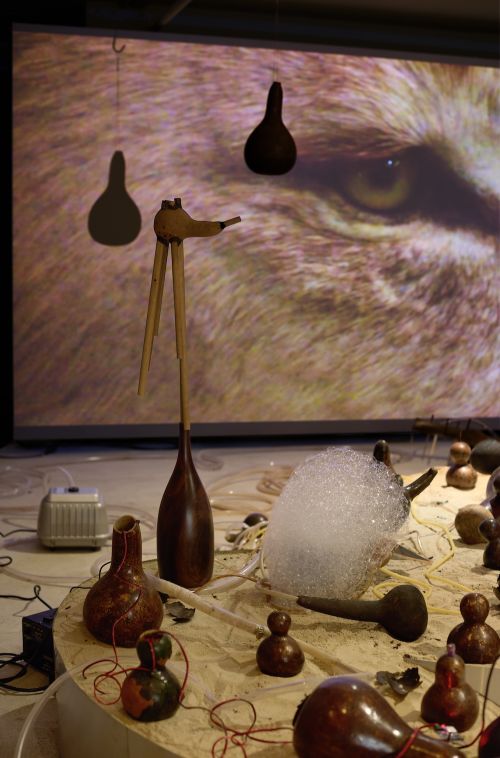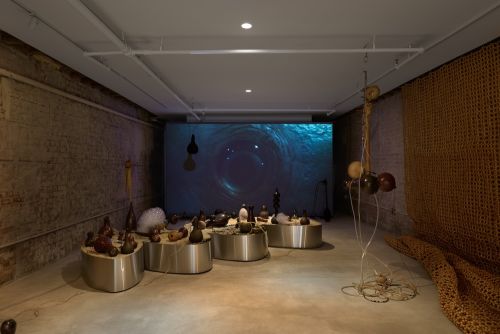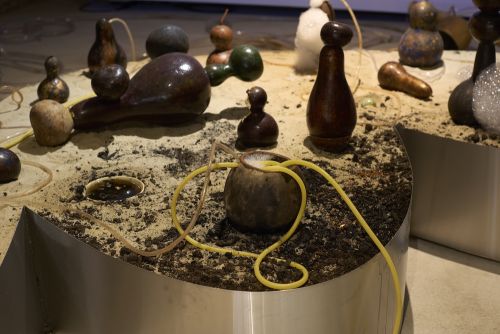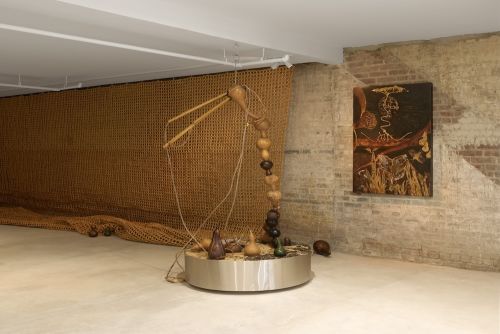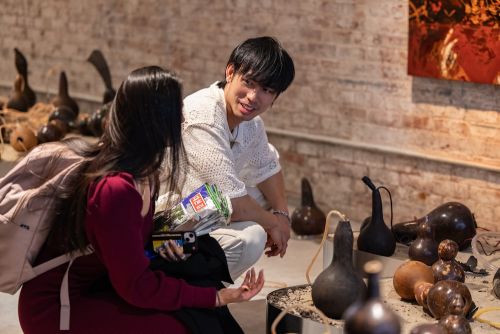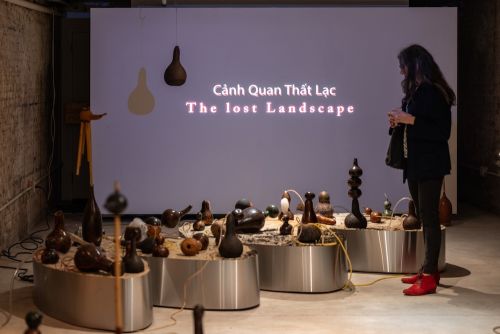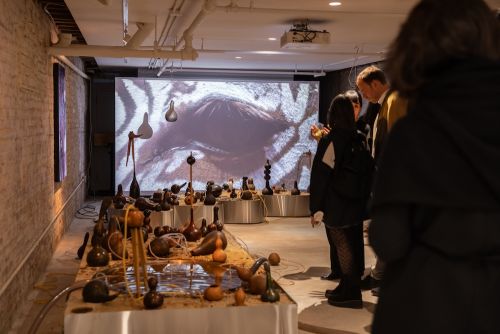Trương Công Tùng: Trail Dust
May 3–July 27, 2024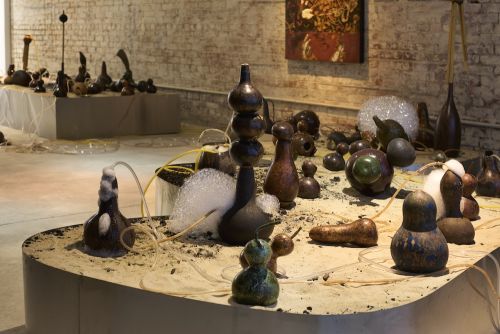
Opening, May 3, 2024, 6-8pm
The multi-media installation Trail Dust by the Vietnamese artist Truong Công Tùng (Đak Lak province, b. 1986), foregrounds the artist’s ongoing exploration of the histories, rituals, and mythologies of land stewardship as a living practice. Akin to the way a gardener nurtures a parcel of land, Truong Công Tùng tends to his work over time, allowing it to evolve, change, and iterate in response to the specifics of each site.
Trail Dust reimagines a living garden as a heavy beaded curtain. Draped along the edge of the gallery, the curtain is woven with beads that originate from forest trees including those that were introduced to Vietnam during the process of industrialization, such as coffee, avocado, rubber, and cashew trees. Combining natural materials with found objects of an inorganic, disruptive, or incongruent nature, Truong Công Tùng reflects on the interruption of Indigenous practices by the forces of modernity, colonialism, and conflict. Rather than lamenting what has passed, Truong Công Tùng’s poetic sensibilities find resilience in a reimagining of the land as a site of communion between the physical and spiritual worlds.
Alongside the curtain are a series of low platforms filled with dirt and seeds, each containing an installation of heavily lacquered gourds connected through a web of clear plastic tubing, bubbling as water is pumped between them. Lacquer is also utilized in a series of paintings, Shadows in the Garden #3 (2023), in which natural and bodily forms are obscured by layers of thick lacquer tree resin sanded to a smooth, nearly glowing surface giving way to a spectral quality. Lacquer, a traditional craft material in East Asia, underwent a transformation into an art form during the French colonial period. This elevation established lacquer as a unique art medium that Truong Công Tùng now uses as a metaphor for the region’s own complicated narrative—layers of history being applied, erased, and rewritten.
In the accompanying video, The Lost Landscape #1 (2021), viewers are taken through the Natural History Museum in Paris. The camera fixates on the glass eyes of the taxidermied animals. According to Vietnamese folklore, it is believed that the last things seen by an animal before their death are permanently captured in their eyes. Truong Công Tùng’s works on view trace this journey of loss and metaphorically suggest a new path to new ends.
Trương Công Tùng (b. 1986, Đắk Lắk province; lives in Ho Chi Minh City) has exhibited extensively in Vietnam and abroad, both as a solo artist and as part of Art Labor. Recent exhibitions include the 58th Carnegie International, Pittsburgh (2022) and others at Manzi Art Space, Hanoi (2021); San Art, Ho Chi Minh City (2018); Galerie Quynh, Ho Chi Minh City (2018); Para Site, Hong Kong (2018); Dhaka Art Summit, Dhaka (2018); Kadist, San Francisco (2016); Nhà Sàn Collective, Hanoi (2016); as well as the Taipei Biennial, Taiwan (2016). He is also the recipient of the inaugural Han Nefkens Foundation—Southeast Asian Video Art Production Grant 2023, in collaboration with Sàn Art, Vietnam; Sa Sa Art Projects, Cambodia; Jim Thompson Art Center, Thailand; Museion, Italy; Busan Museum of Art, South Korea, and Prameya Art Foundation, India.
